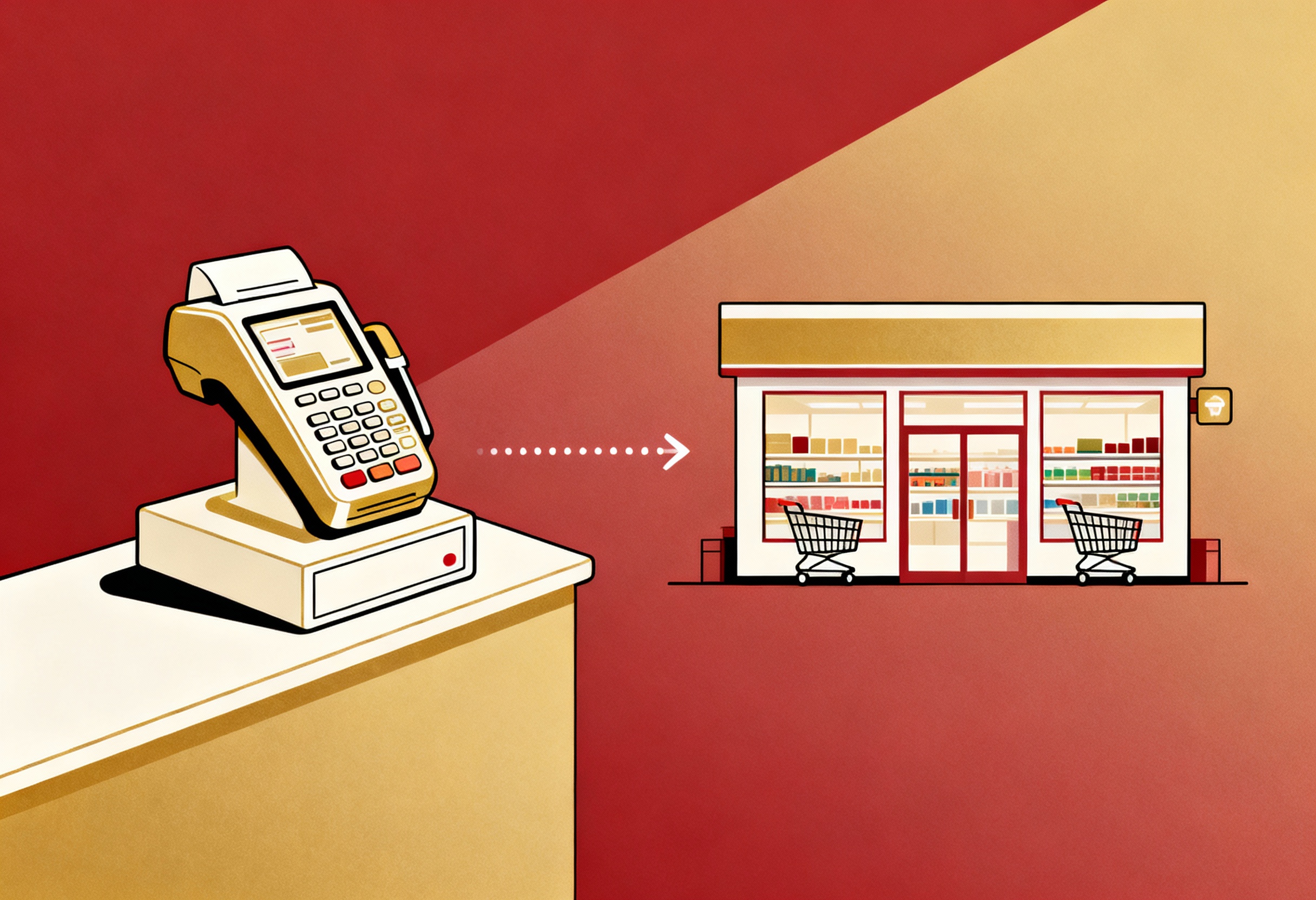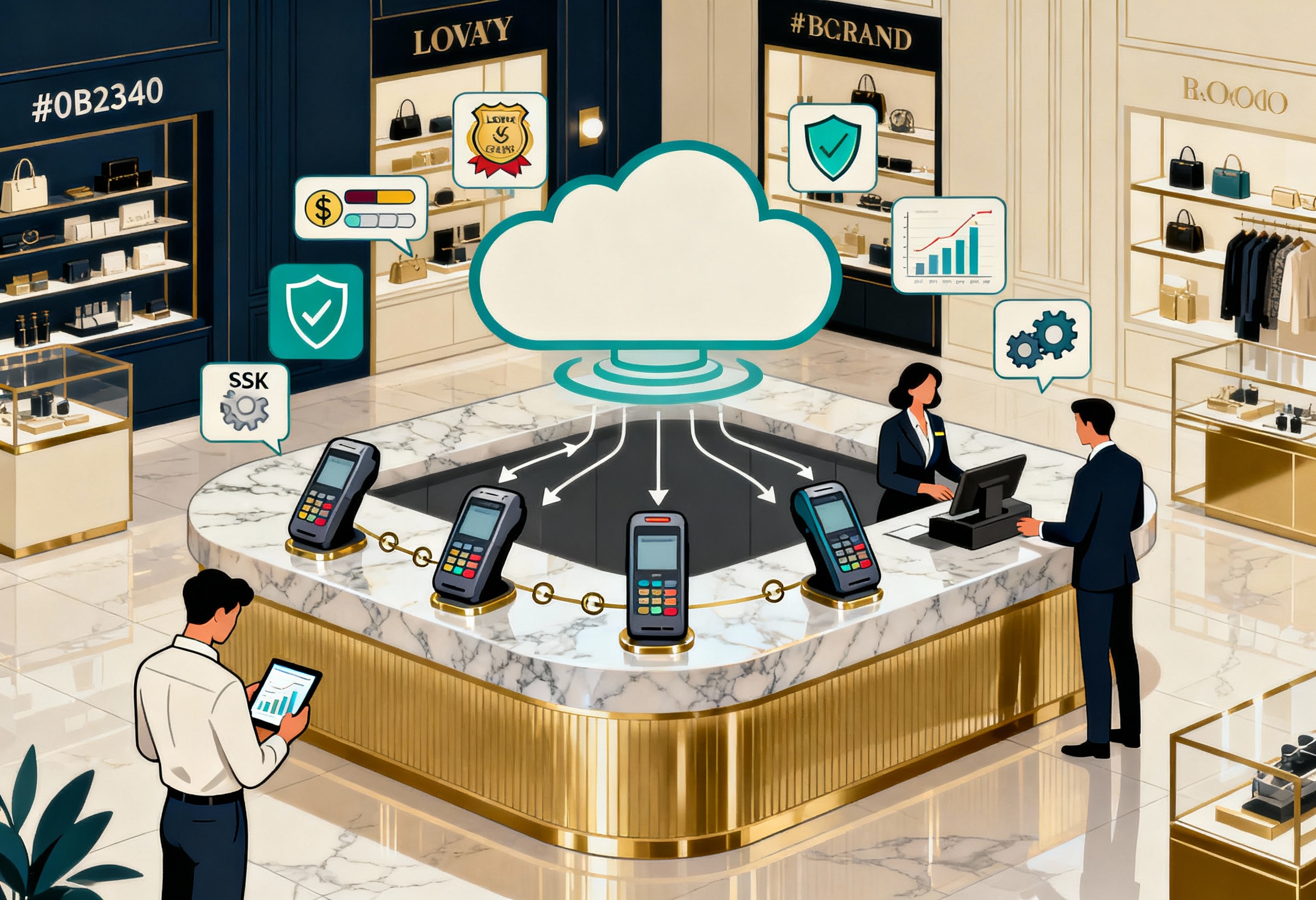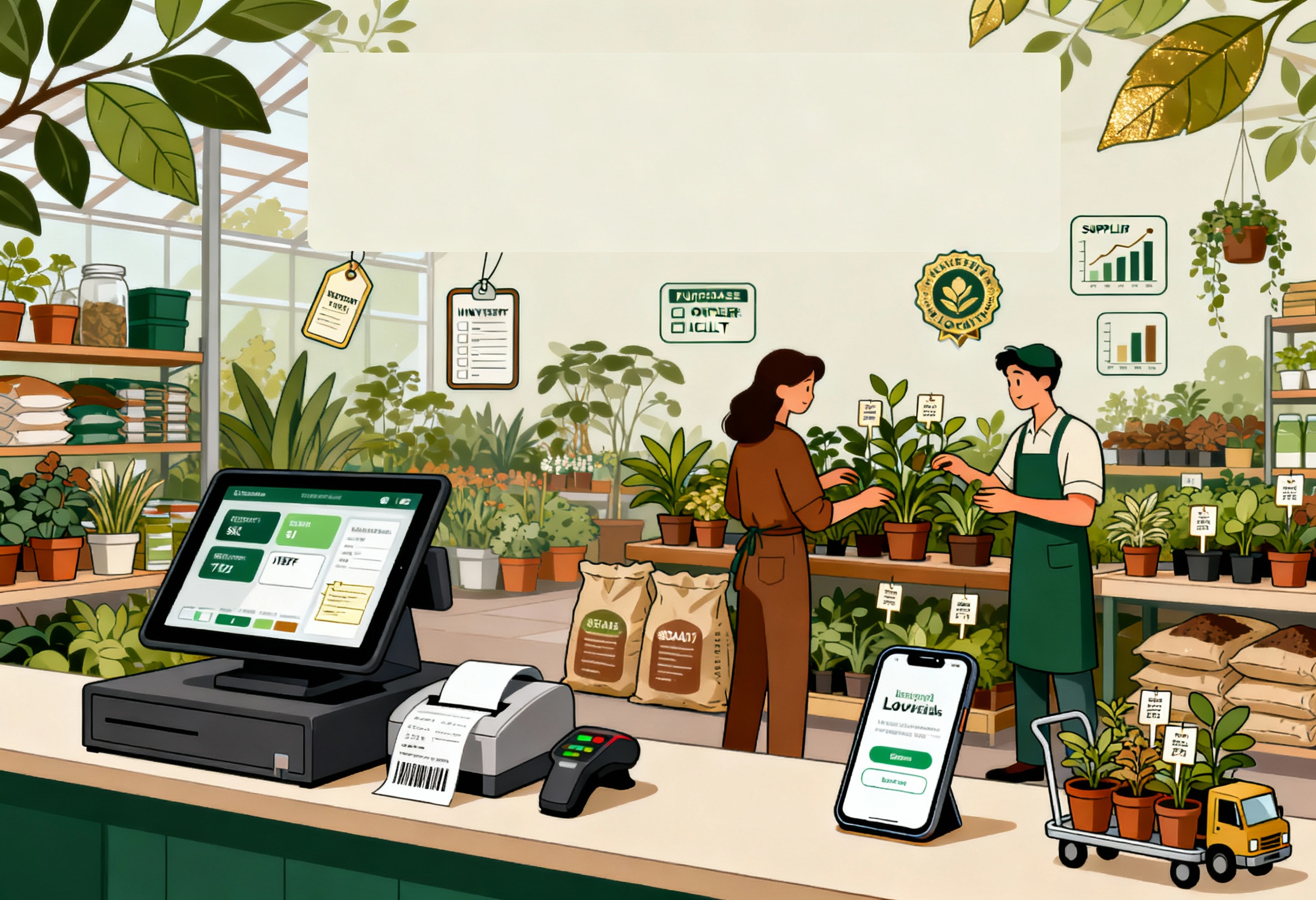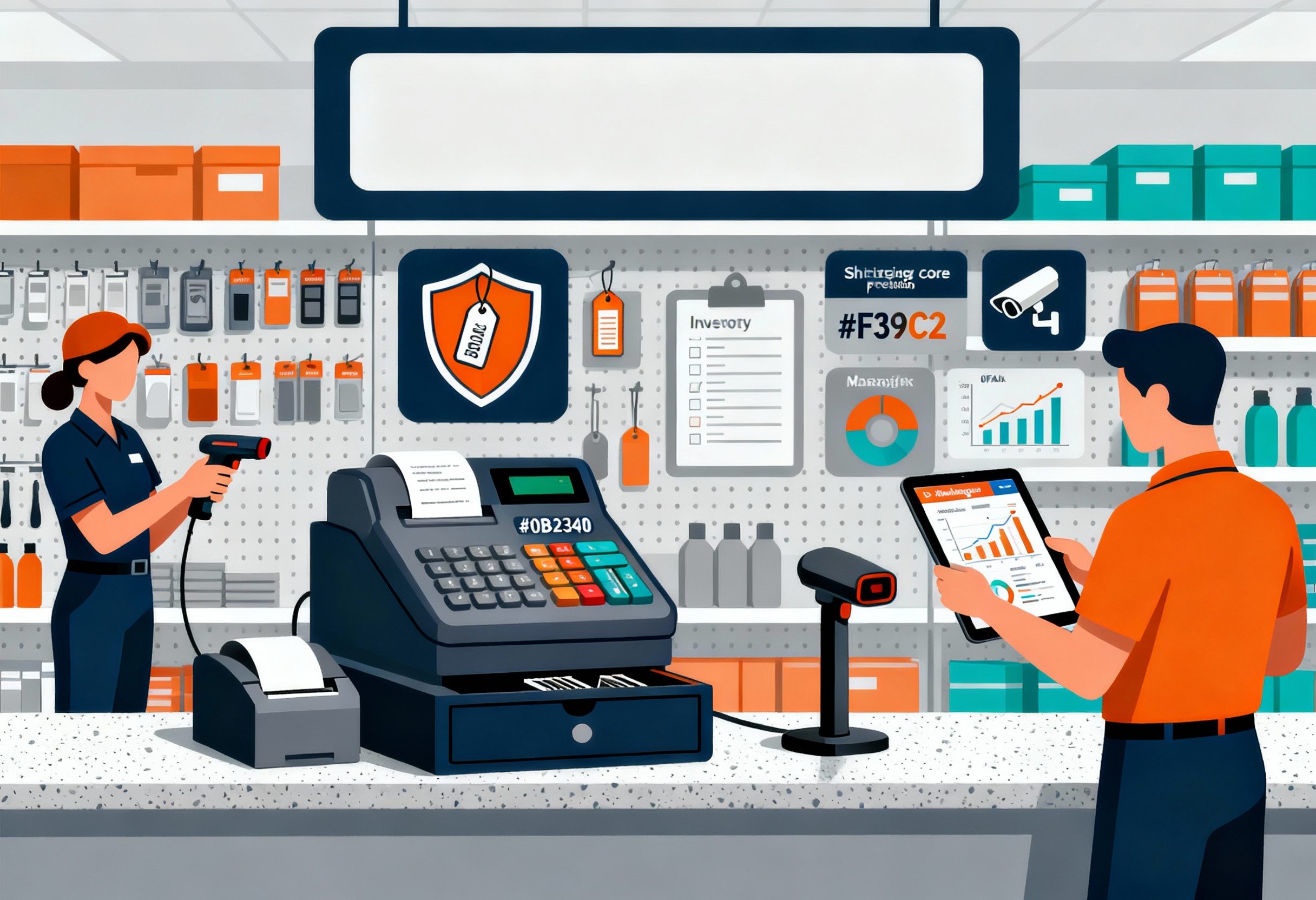Shoppers expect quick checkouts, accurate stock, and flexible payment choices. Walmart achieves this through a custom-built POS that supports its global scale. Many supermarket owners now ask: what POS does Walmart use, and could they build something similar for their stores? This ConnectPOS’s guide explores Walmart POS software and draws lessons that supermarkets can apply to strengthen their own operations.
Highlights
- Walmart relies on a custom-built POS that handles massive transaction volumes, real-time inventory updates, and omnichannel sales.
- Key strengths of Walmart’s POS include fast checkouts, flexible payment options, loyalty integration, and secure transactions.
- Supermarkets can apply lessons from Walmart’s POS such as speed, real-time tracking, and data-driven promotions without needing a global budget.
Why Retailers are Interested in Walmart’s POS System
Each week, Walmart serves approximately 255 million customers across more than 10,750 stores and clubs in 19 countries. At peak hours, millions of items are scanned and sold in real time. A small delay in this process would not just slow down lines but ripple through supply chains and restocking. This scale explains why Walmart’s POS system attracts so much attention.
Checkout speed is more than a convenience; it is a direct driver of revenue. Long waits frustrate customers and push them toward competitors. Studies show that long checkout lines rank among the top reasons shoppers leave stores without buying. In the U.S., new surveys say waiting times in stores have become much longer since 2022.
Walmart’s system is designed to finish transactions quickly, keeping queues short and customer satisfaction high. For retailers, this demonstrates how technology at the register connects directly to sales performance.
The system also reaches far beyond the checkout counter. Every scan updates inventory data, triggers supply chain processes, and informs customer service. This constant synchronization allows Walmart to avoid stockouts, plan promotions, and keep shelves filled. Smaller supermarkets may not match Walmart’s scale, but the principle is clear: a POS system that ties sales, stock, and service together can change day-to-day operations.
What POS Does Walmart Use?
Walmart does not rely on an off-the-shelf system. Instead, it uses a proprietary Global POS platform designed in-house. The reason is simple: standard tools cannot manage the enormous complexity of its global network. This custom-built system connects every store, warehouse, and online channel, ensuring sales data flows without delay.
- Proprietary global POS platform: Built internally, it adapts to Walmart’s unique needs, handling millions of transactions each day while integrating with supply chain systems.
- Real-time inventory updates: Every scan changes stock levels instantly. If a shelf runs low, the system alerts the supply chain to prevent lost sales.
- High-speed transaction handling: Long lines are costly. Walmart’s POS is designed to process transactions in seconds, even during holiday peaks.
- Omnichannel integration: Whether customers shop online, in-store, or choose click-and-collect, the POS ties every sale together to keep data consistent. This also streamlines end-to-end order fulfillment for pickup and delivery.
- Mobile payments and Scan & Go: Shoppers can use the Walmart app to scan items as they shop and pay through their phone, skipping the checkout line entirely. Contactless payments are now mainstream. In the U.S., more than half of all face-to-face card transactions are contactless. At Sam’s Club, which is part of Walmart, one in three members regularly uses Scan & Go after adoption rose by 50% in the last three years.
- Strong security and PCI compliance: With millions of card transactions daily, Walmart secures data using industry standards and end-to-end encryption.
- Industrial-grade hardware: The system runs on durable, cashier-friendly devices, barcode scanners, receipt printers, card readers, built for nonstop retail environments.
This combination explains why Walmart can maintain control across thousands of stores while delivering smooth, fast checkouts. It shows how technology can transform what seems like a simple register into the backbone of a global retail empire.
Key Features That Make Walmart’s POS Stand Out
Walmart’s POS is more than just a checkout tool. We’ll show you the key elements that make it a model for supermarkets everywhere.
Real-time stock synchronization to prevent stockouts
Walmart’s POS links directly to its supply chain, updating stock levels the moment items are scanned. This real-time sync reduces empty shelves, a frustration that drives customers elsewhere.
For example, if cereal boxes run low in one store, the system signals replenishment automatically. Such precision keeps high-demand products available and protects both revenue and customer trust. Retailers looking to replicate this should consider inventory management software that syncs sales and stock in real time.
►►► Optimal solution set for businesses: Multi store POS, Next-gen POS, Inventory Management Software (MSI), Self Service, Automation, Backorders
Fast, frictionless checkout experiences
Nobody likes standing in long lines, especially during busy seasons. Walmart’s POS is engineered for speed, processing high transaction volumes within seconds. Through minimizing delays, stores can move large numbers of customers through checkout efficiently.
This focus on speed improves satisfaction and encourages repeat visits. Shoppers remember smooth checkouts, while retailers save money by keeping queues short.
Flexible payment options (cash, cards, wallets, contactless)
Modern customers expect choice at checkout, and Walmart delivers. Its POS accepts everything from cash and cards to eWallets and contactless payments. Shoppers using Apple Pay, Google Pay, or Walmart Pay experience convenience tailored to their habits. This flexibility not only improves the customer experience but also captures sales that might be lost if preferred payment methods weren’t supported.
Loyalty programs and promotions integration
Walmart’s POS supports promotions and loyalty program campaigns directly at checkout. Discounts, digital vouchers, and reward points are applied automatically without slowing transactions. This integration keeps customers engaged and encourages repeat shopping. Beyond mechanics, paid loyalty programs can materially change behavior. McKinsey finds members are about 60% more likely to increase spending after joining.
For example, shoppers can redeem rewards through their Walmart app or at self-checkout, making the process quick and convenient while giving the brand a competitive edge in retention.
Data-driven analytics for demand forecasting
The POS collects data that predicts future demand using report & analytics tools. Walmart analyzes purchase patterns to identify which products will sell fastest in each location. For instance, spikes in seasonal goods like school supplies or holiday snacks are detected early, guiding replenishment.
This forecasting prevents stock shortages, cuts waste, and ensures shelves always reflect what customers want most.
Omnichannel support: online & offline unified
Walmart’s POS connects every channel, making shopping consistent across online and physical stores. Customers can check availability on the app, reserve items, and pick them up in person.
Returns are processed easily whether purchased online or offline. This unified approach builds trust, saves time, and creates a frictionless customer journey. It proves that true omnichannel integration starts with a smart POS backbone and a strong CX solution.
Secure transactions with end-to-end encryption
Handling millions of transactions daily means security is non-negotiable. Walmart’s POS uses end-to-end encryption and PCI compliance to protect sensitive payment data. This safeguards customers against fraud while maintaining trust in the brand.
For example, whether paying with a card or digital wallet, every transaction is encrypted instantly, making breaches far less likely and keeping customer confidence intact.
Fault tolerance and offline operation capability
Retail operations cannot stop because of internet issues. Walmart’s POS is designed with fault tolerance and offline operation, allowing sales to continue even during outages. Orders sync back once connectivity is restored, preventing lost revenue.
Imagine a busy holiday rush where the internet drops. Transactions still flow, lines keep moving, and customers leave satisfied rather than frustrated.
Should You Build a Similar POS for Your Supermarket?
The success of Walmart’s system may tempt supermarkets to build their own POS. A custom approach can give businesses more control, but it comes with challenges that shouldn’t be underestimated.
On the plus side, a proprietary POS allows tailored workflows that match exactly how a supermarket operates. Local payment methods, supplier integrations, and promotions can be designed from day one. Over time, this level of control can support long-term cost savings, since reliance on third-party licenses and transaction fees decreases. Another benefit is data ownership, giving full access to customer, sales, and inventory information without outside restrictions.
The downside is substantial. Building a robust POS requires high upfront costs, skilled development teams, and months of testing before rollout. Even after launch, ongoing updates, bug fixes, and compliance work consume time and money. Regulations around payments and receipts add another layer of complexity. A system that fails during peak hours could cost more in lost revenue than any savings from owning the technology.
So when does building make sense? Large chains with unique needs, such as multinational operations or highly specialized inventory, may find custom systems worth the investment. For smaller supermarkets, an off-the-shelf solution is often smarter. These platforms are tested, supported, and ready for quick deployment, allowing businesses to start selling without delay.
A middle-ground exists through white-label or custom POS systems. This hybrid route lets supermarkets add branding and tailor some functions while relying on proven infrastructure. It balances control and cost, giving supermarkets flexibility without the long development cycle.
Lessons Small Retailers Can Learn from Walmart’s POS
Walmart’s custom-built POS may seem out of reach for smaller supermarkets. Yet many of the principles behind it can be applied at any scale. By adopting the right lessons, small retailers can improve operations and give customers a smoother experience without needing Walmart’s budget.
- Focus on speed and ease at checkout: Shoppers hate waiting. Even a few extra minutes in line can cause walkouts. A fast POS with barcode scanners or mobile checkout keeps lines short and customers satisfied.
- Use real-time inventory to avoid customer frustration: Few things hurt loyalty more than empty shelves. Real-time inventory updates prevent overselling and alert staff to reorder on time. When customers always find what they came for, they return.
- Add flexible payments to meet customer expectations: Today’s shoppers want options. Supporting cash, cards, eWallets, and contactless payments removes friction at checkout. If a preferred method is missing, some sales may be lost.
- Leverage data insights for better promotions: POS data reveals what sells, when, and to whom. Small retailers can use this information to plan promotions that resonate. A discount on popular weekend items, for example, can drive more foot traffic.
- Prioritize security to build trust: Customers need confidence that their payments are safe. Encrypted transactions and PCI compliance reduce risks of fraud. When shoppers trust the system, they shop more freely and return more often.
These lessons show that even without Walmart’s scale, small retailers can compete smarter by focusing on speed, accuracy, convenience, data, and security.
ConnectPOS – The All-in-One POS Built for Supermarket Success
Supermarkets don’t need a giant retailer’s resources to achieve strong results. ConnectPOS delivers a smart, scalable system designed to meet supermarket demands.
What sets ConnectPOS apart for supermarkets:
- Real-time inventory management: Stock levels update instantly across all channels. No more stockouts, missed sales, or over-ordering.
- Fast checkout and mobile POS: Transactions finish in seconds, with support for barcode scanners, self-checkout, and mobile devices for on-the-go payments.
- Offline mode: Keep selling even if the internet drops. Orders sync automatically once the connection is back.
- Multi-store and multi-warehouse control: Sync sales, stock, and customer data across branches and warehouses in real time.
- Flexible payment options: Cash, card, contactless, eWallets, gift cards, and split payments are all supported.
- Loyalty and promotions: Built-in CRM POS lets you run loyalty points, digital vouchers, discounts, and personalized offers.
- Omnichannel integration: Unified shopping between online and in-store. Customers can order online, pick up in-store, and redeem loyalty rewards everywhere.
- Customizable checkout: Adapt the checkout screen and workflow to your staff’s needs for faster training and smoother operations.
- Advanced reporting and analytics: Access live reports on sales, staff performance, product trends, and profitability.
- Multi-currency and multi-language support: Ideal for supermarkets that serve diverse communities or operate internationally.
- Hardware compatibility: Works with standard supermarket hardware: barcode scanners, weighing scales, receipt printers, cash drawers, and card readers.
- Security and compliance: PCI-compliant payments, encrypted transactions, and role-based access keep data safe.
- Integration ecosystem: Connects with eCommerce platforms (Shopify POS, Magento POS, BigCommerce POS), ERP, CRM, and accounting tools.
- Customer management: Create and track customer profiles, purchase history, and preferences for targeted campaigns.
- Custom-built flexibility: APIs and modular design let supermarkets add features unique to their operations, ready for automation as you scale.
Supermarkets using ConnectPOS often see faster checkouts, shorter lines, and happier customers. Real-time sync keeps inventory accurate across every channel, while flexible payment choices cut delays at the register. These improvements lead to smoother omnichannel operations, higher sales conversion, and stronger customer loyalty.
FAQs: Walmart POS Software
1. What POS does Walmart use exactly?
Walmart runs on a proprietary Global POS platform built in-house. It supports real-time inventory, fast checkouts, omnichannel sales, and strict data security standards.
2. Can small supermarkets build a system like Walmart’s?
Technically yes, but the high costs, complex compliance, and long build times make it impractical for most small and medium supermarkets.
3. What features matter most in a supermarket POS?
Speedy checkouts, real-time inventory, flexible payments, security, and omnichannel integration matter most. These elements directly influence sales performance and customer satisfaction.
4. Is a white-label POS like ConnectPOS a better option than building?
Yes. ConnectPOS provides proven stability, full flexibility, and faster deployment. It saves supermarkets from the cost and risk of developing software from scratch.
5. How much does it cost to build vs buy?
Building a custom POS can run into millions. Buying a solution like ConnectPOS costs a predictable subscription, making it far more accessible.
Final Thoughts
Walmart POS software shows how retail giants use technology to stay ahead. Walmart’s system proves the value of fast checkouts, real-time stock updates, and secure payments. Supermarkets do not need the same global budget to get similar results. ConnectPOS provides a reliable and scalable solution built for supermarket needs. It helps retailers sell faster, track stock smarter, and build stronger customer loyalty. Ready to see how ConnectPOS can transform your supermarket? Contact us today and start building smarter retail success.
►►► Optimal solution set for businesses: Shopify POS, Magento POS, BigCommerce POS, WooCommerce POS, NetSuite POS, E-Commerce POS



